From Billy Porter [1] famously donning a collar necklace made of 500 cultured diamonds at last year's Oscars to Meghan Markle [2] sporting sustainably made pieces by Kimaï on the regular, your favourite stars are all about lab-grown diamonds.
But what exactly is a lab-grown diamond? How much does it cost? Is it even real? To field these questions and more, we turned to the pros: Kimaï cofounders Jessica Warch and Sidney Neuhaus, Labyrinth Diamonds [3] founder Seetal Jogia, Diamond Foundry [4] representative Ye-Hui Goldenson, and Lark & Berry [5] founder Laura Chavez. Here are their insights.
What Are Lab-Grown Diamonds?
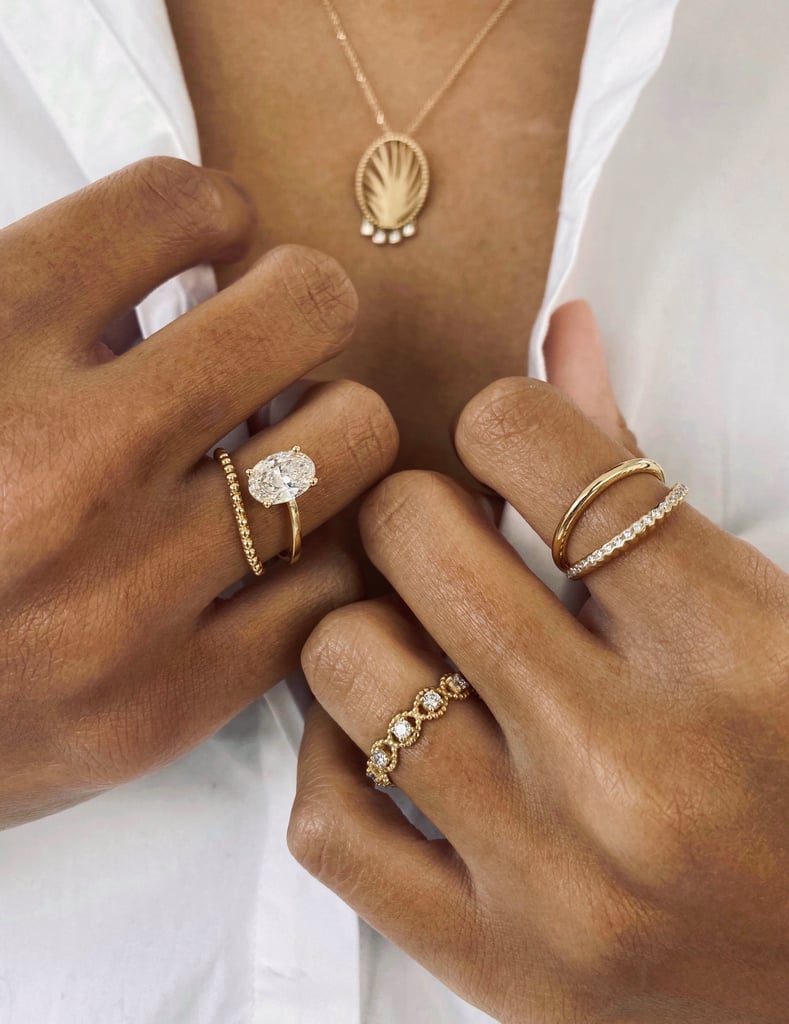
In short, lab-grown diamonds are exactly what they sound like: man-made diamonds created in a lab. Unlike traditional mined diamonds though, lab-grown diamonds don't require large holes to be cut and drilled into the ground. Instead, they utilise carbon from fossil fuels to mimic the natural diamond growing process. Because of this, they are chemically and aesthetically similar to mined diamonds, not to mention way more eco-friendly.
Although lab-grown diamonds are trending right now, they were first "grown" in the 1950s via a high pressure, high temperature process similar to mining. "A carbon seed was placed within a sealed chamber with carbon-rich gas, then heated to around 800 degrees Celsius until the gases started to 'stick' to the seed, which grew a diamond carbon atom by atom," Warch tells POPSUGAR.
How Are Diamonds Made in a Lab?

Diamonds that are dug up in the ground are formed naturally through a combination of heat, pressure, and time. Lab-grown versions, however, recreate this process in as little as four weeks. There are two main approaches: high pressure high temperature (HPHT) and chemical vapor deposition (CVD). HPHT diamonds are created in a closed chamber using high levels of heat and pressure, while CVD diamonds are placed in a sealed vacuum at a temperature of 800 degrees Celsius. "The longer the time in the vacuum, the larger the rough will grow," explains Jogia. CVD diamonds are type IIa, meaning they are purer diamonds that contain little to no nitrogen.
Essentially, lab-grown diamonds replicate nature's process in a controlled environment with a fraction of the environmental footprint. It's important to note that once the diamonds are formed, they are uncut and unpolished just like mined diamonds. "The process of readying them for jewellery is the same as what a mined diamond must undergo at that point," Chavez says. Translation: The diamond will then get assessed for the four Cs: cut, colour, clarity, and carat. The length of time for cutting and polishing depends on the use of material. "The cutter will decide if it's best to cut one stone or many stones from one piece of rough diamond material," Jogia says. Then, the type of cut — round brilliant, radiant, cushion, emerald, or oval — will be determined. And finally, each stone will be graded by an international lab.
Are the Diamonds Actually Real?
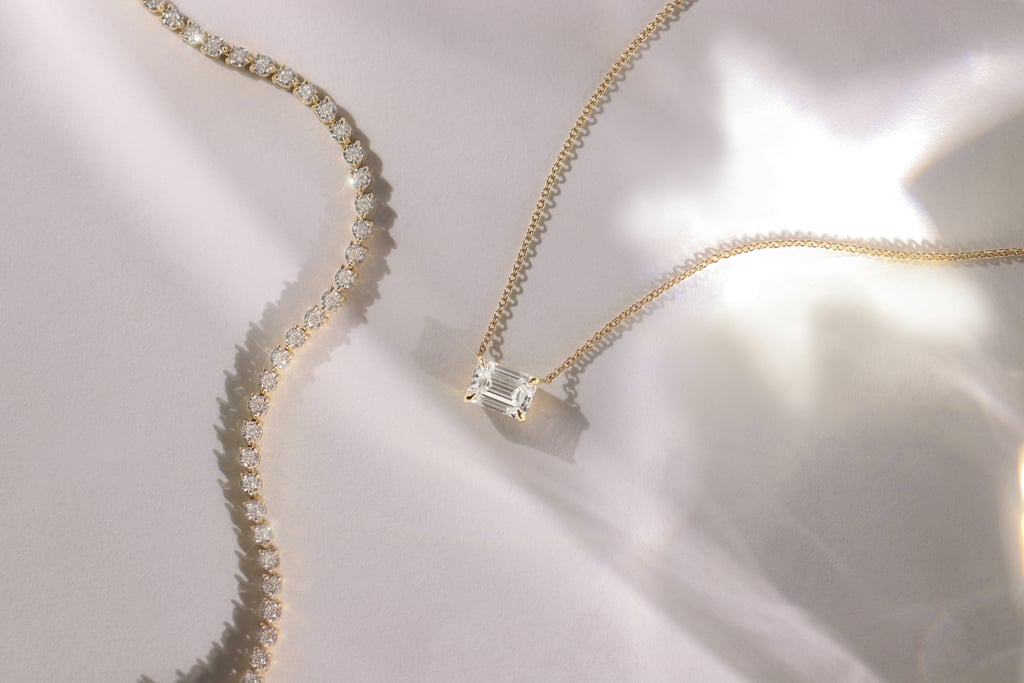
The short answer is yes. Lab-grown diamonds are assessed by either The Gemological Institute of America (GIA) or The International Gemological Institute (IGI), two of the oldest companies in the diamond business. These organisations grade on the 4 Cs to ensure every diamond is 100 percent authentic.
Warch recommends getting a certification of authenticity when buying any diamond, be it mined or lab-grown. "All of our diamonds above 1/2 carat receive a Diamond Authentication Certificate from the IGI or GIA, which provides a third-party, unbiased reassurance of what you are buying," she says.
Are They More Ethical Than Mined Diamonds?
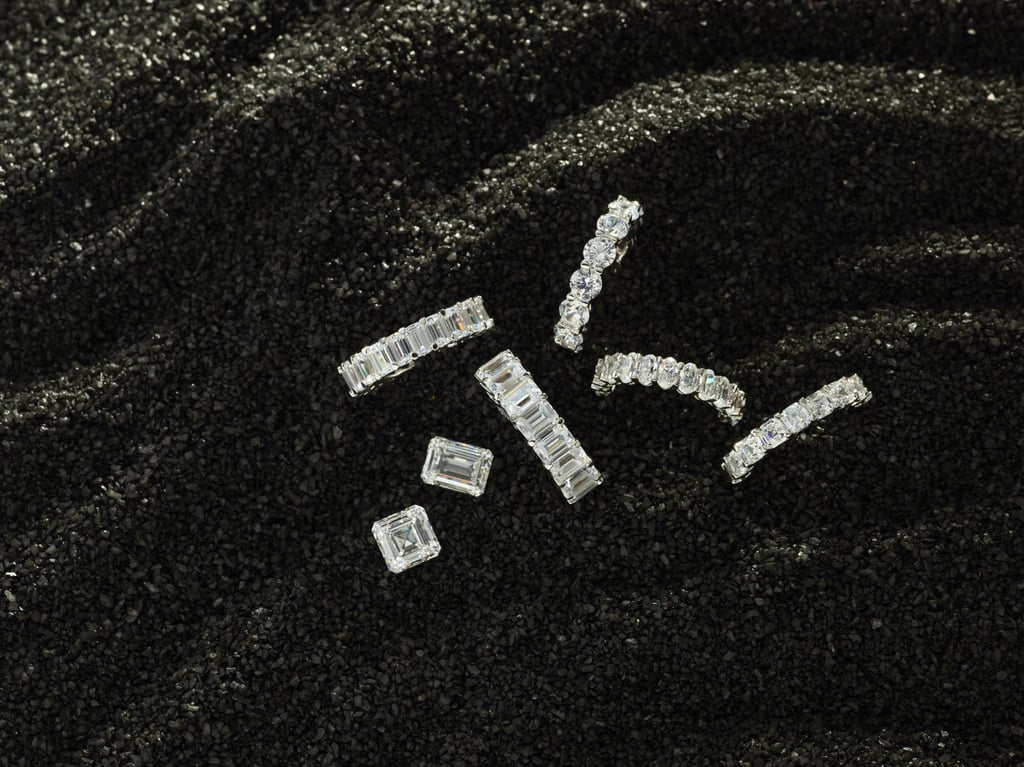
For every single diamond carat, an estimated 250 tons of earth [6] has to shift. For context, 142 million carats [7] were mined in 2019 alone. This has created holes that are so big, they can be seen from space. Furthermore, traditional mining releases 2,011 ounces of pollution and 143 pounds of carbon dioxide per carat. "An alarming amount of pollution and irreversible damage is done during and after a mine is opened," Jogia says, also citing unsafe working conditions, soil erosion, and degradation.
With mined diamonds, it's also difficult to know exactly where your diamond came from or to ensure no harm was done in the process of creating it. Though some jewellery brands have launched end-to-end traceability platforms, lab-grown diamonds still have less channels to go through. There are less hands that have touched it, travelling from the lab to jeweler to customer.
Numerous lab-grown diamond jewelers seek suppliers that use solar energy to offset their water waste. "By comparison, the energy used while mining is often dirty diesel," Warch says. "The long-term effects left on our planet are vast."
How Much Does a Lab-Grown Diamond Cost?
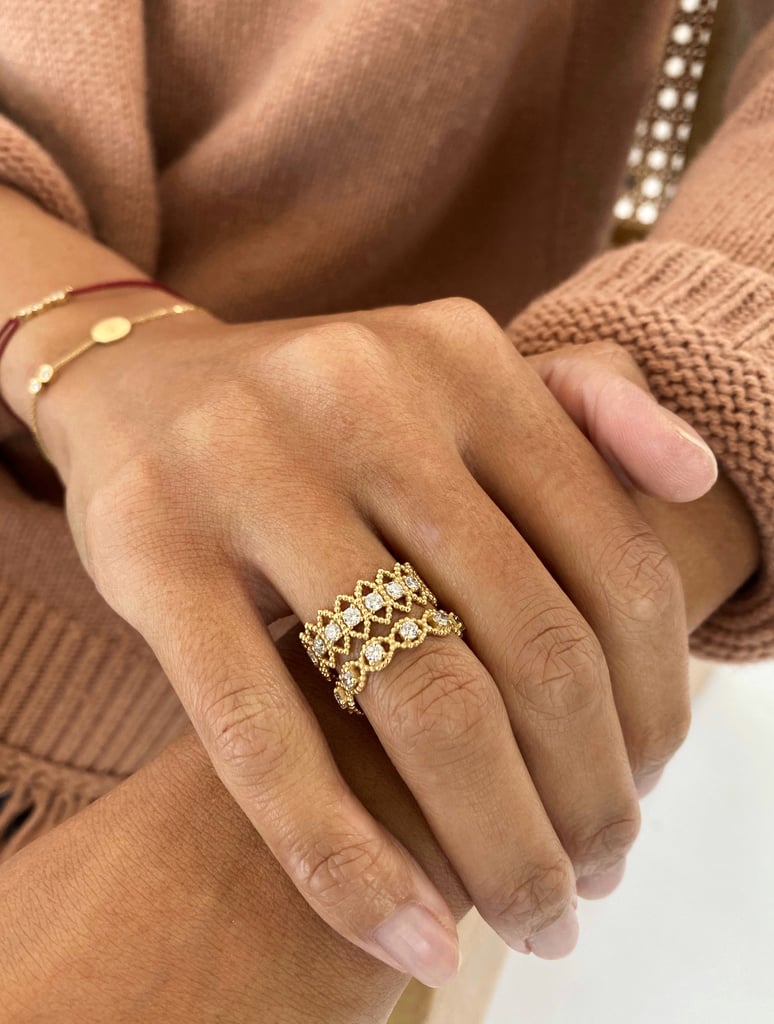
Because there are less channels to go through in the supply chain, lab-grown diamonds can cost anywhere from 40 to 60 percent less than mined diamonds. Pricing is determined by the shape and, of course, the four Cs. According to the International Gemological Institute, diamonds with a sharper, more distinct colour grade will be more expensive. Graded on a five-level scale of excellent (light beautifully reflects) to poor (no sparkle), the shape, depth, and symmetry play a big role, too. Any imperfections in clarity can potentially alter the cost as well. The weight of the diamond is also a factor (the heavier the stone, the higher the price), as is the shape — round brilliant, the most popular diamond, is by far the priciest.
Keep scrolling to shop our favourite lab-grown diamonds of the moment.
Matilde T Ring

Matilde T Ring [8] ($616)
Labyrinth Diamonds 14K Gold Emerald Hidden Halo Diamond Solitaire Ring

Labyrinth Diamonds 14K Gold Emerald Hidden Halo Diamond Solitaire Ring [9] ($1,390)
Vrai Iconic Stud
Vrai Iconic Stud [10] ($2,200)
Kimaï Felicity Earring
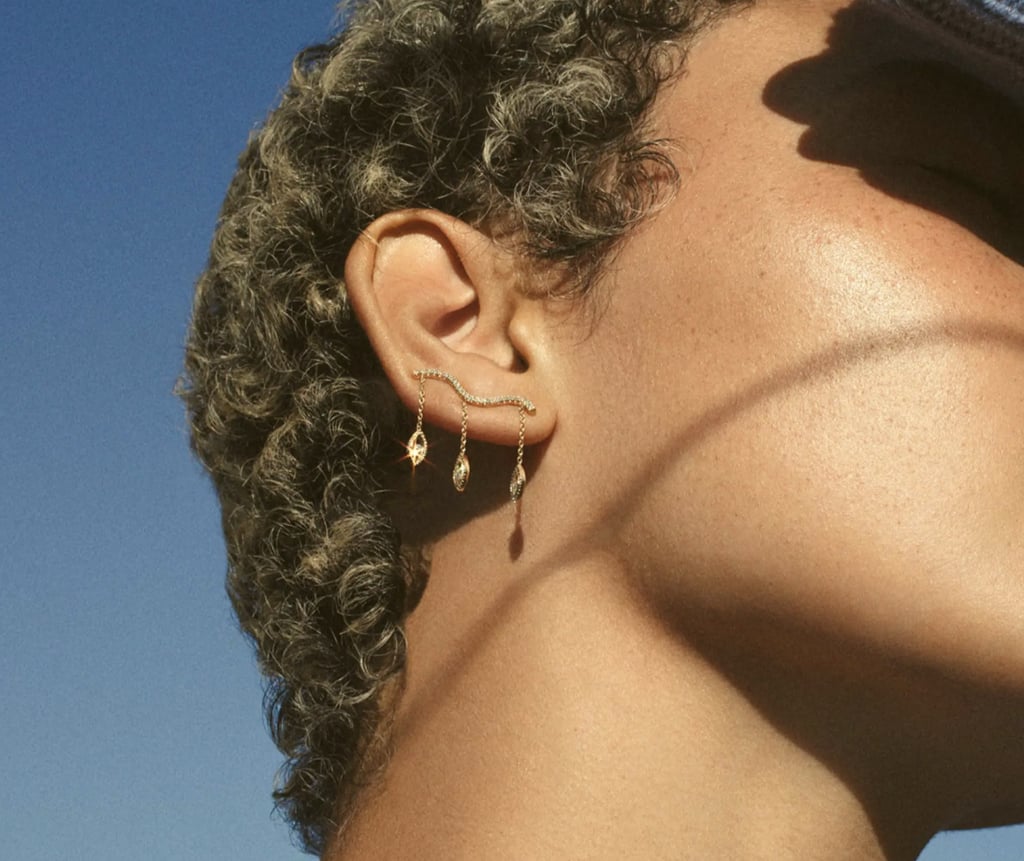
Kimaï Felicity Earring [11] ($655)
Lightbox Princess Pendant
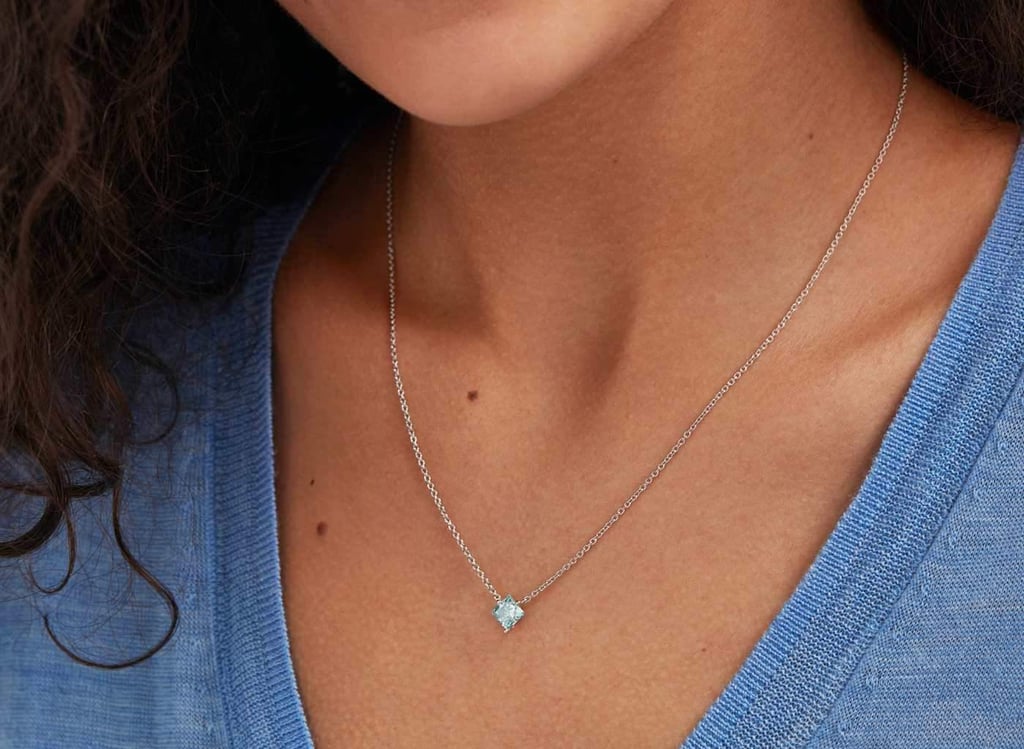
Lightbox Princess Pendant [12] ($1,000)
Diamond Nexus East-West Emerald Necklace
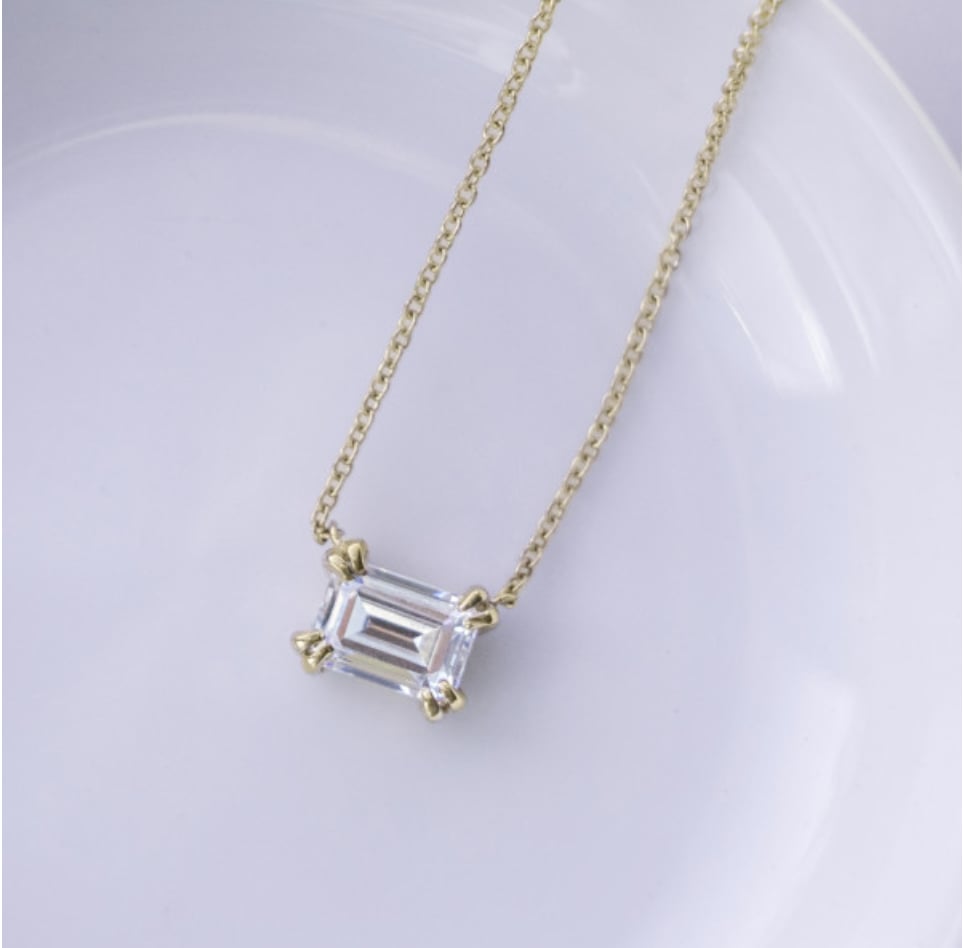
Diamond Nexus East-West Emerald Necklace [13] ($430)